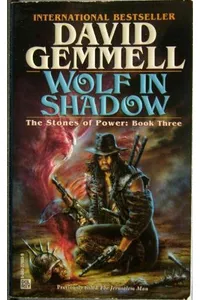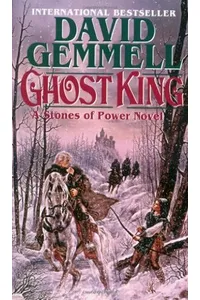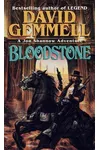Step into the enchanting world of Sipstrassi, where mystical Stones of Power pulse with magic and heroes like Uther Pendragon wield legendary swords to battle dark forces! The Sipstrassi series, a captivating blend of dark fantasy and Arthurian legend, transports readers to a realm of sorcery, swordsmanship, and epic quests. Written by British author David Gemmell, this series weaves historical echoes with fantastical storytelling, making it a hidden gem for fantasy enthusiasts.
With its vivid battles and morally complex characters, Sipstrassi offers an adventure that feels both timeless and thrillingly unique. Whether you’re drawn to tales of redemption or the clash of ancient magic, this series promises a journey worth taking.
How Sipstrassi Began
David Gemmell, a former journalist turned fantasy icon, crafted the Sipstrassi series in the late 1980s, drawing inspiration from Arthurian myths and his love for heroic tales. His debut novel, Legend, had already cemented his reputation, but Sipstrassi allowed Gemmell to explore a darker, more mystical corner of fantasy. The series, also known as the Stones of Power Cycle, emerged from his fascination with power’s corrupting allure and the resilience of the human spirit, set against a backdrop of ancient Britannia and beyond.
Gemmell’s gritty realism and knack for vivid war scenes shaped Sipstrassi into a saga that feels both intimate and epic. Published between 1987 and 1994, the series reflects his signature style: fast-paced, emotionally resonant, and unafraid to embrace the shadows of heroism.
The Heart of Sipstrassi
The Sipstrassi series spans seven novels, split into subseries, with the Stones of Power—magical artifacts granting immense abilities—tying them together. Key titles include Ghost King and Last Sword of Power, which reimagine Arthurian legend, and the Jon Shannow trilogy, set in a post-apocalyptic world. In Ghost King (1988), young Thuro rises as a leader to defend Britannia from invaders, wielding the Sipstrassi’s magic. Last Sword of Power (1988) follows Uther Pendragon, chained in Hell, as he battles a bloodthirsty Goth leader empowered by dark sorcery.
The Jon Shannow novels, starting with Wolf in Shadow (1987), shift to a ravaged future where Shannow, a lone gunslinger, seeks Jerusalem amid chaos fueled by corrupted Sipstrassi stones. Themes of redemption, sacrifice, and the cost of power permeate the series, with magic and violence shaping a world where heroes grapple with their flaws. Gemmell’s detailed battle scenes and morally gray characters create a gritty, immersive experience that balances historical echoes with fantastical innovation.
The series’ setting, from ancient Britannia to post-apocalyptic wastelands, blends historical fantasy with speculative elements, while its style—vivid, action-packed, and emotionally raw—captivates readers who crave depth in their sword-and-sorcery tales.
Why Sipstrassi Resonates
Sipstrassi’s blend of Arthurian reimaginings and dark fantasy has earned it a loyal, if niche, following among fantasy readers. Gemmell’s ability to craft flawed yet inspiring heroes resonates, offering stories that explore universal struggles like honor and redemption. The series’ influence lies in its pioneering mix of historical and fantastical elements, paving the way for later grimdark authors. Its vivid war scenes and magical systems continue to inspire fans who cherish immersive, character-driven epics.
Though less mainstream than Gemmell’s Drenai saga, Sipstrassi’s unique fusion of myth and magic keeps it alive in the hearts of dedicated readers, with used bookstores and online communities buzzing about its timeless appeal.
- About Sipstrassi
- Publication Years: 1987–1994
- Number of Books: 7
- Subseries: Arthurian novels, Jon Shannow trilogy, Greek series
- Author: David Gemmell
Ready to embark on a thrilling quest? Grab Ghost King and dive into Sipstrassi’s spellbinding world of magic and heroism!





